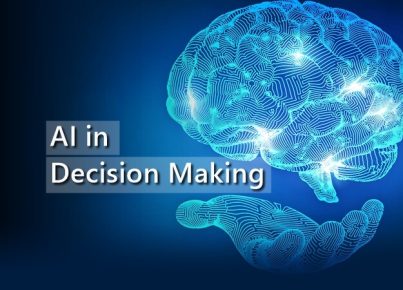You may think that the cold of winter is too early to start thinking about summer internships, but the competition for placement is already heating up. Companies have already begun accepting applications for summer, and as a result, students vying for top spots need to start preparing now. This can be easier said than done, as students have more choices, but also greater competition.
For this week’s installment of “Diverse Conversations,” I interviewed L.J. Brock, Vice President, Talent Acquisition and People Infrastructure at Red Hat. L.J. and I discussed Red Hat’s internship program and the 5 questions he says all interns should ask to increase their options and make sure they secure the best opportunity to drive their future.
Q: How has today’s young workforce changed from the workforce of, for example, 10 years ago?
A: The workforce of today, as a whole, has the same attitude that the startup workforce had 10 years ago. There’s a lot of confidence and willingness to take chances. People want to make their marks at a company and be recognized for the amount of work they put in and I think jobseekers are looking for a job they care about, doing work that excites them, at a company whose mission they can believe in. It’s really competitive, especially in the technology industry. The stigma of moving from job to job is gone and people don’t feel they have to pay their dues in order to move up. Everyone is looking for, and finding, what they want, now.
Q: Is there any particular type of environment that college graduates expect when they enter the workforce? For example, do they expect companies to be open to their ideas, or is it just a matter of “come in and do your job?”
A: The main things that attract people, including college graduates, to Red Hat are our environment and culture. The ability to make an impact and see that impact on day one is paramount and I think a lot of these jobseekers are over the idea of “just doing a job” and going home. They want to influence. They want to be recognized. And they want to do this on a grand scale, no matter their title and time in the job. Red Hat has always operated as a meritocracy – your ideas really matter here and the best ideas will rise to the top. It’s how we work in developing software and it’s how our company moves forward– through our people, their hard work, and their ideas.
Q: What should the ultimate goal of the internship be? Gain knowledge? Get a better idea of what the working world is like? Get a job at the company you’re interning at?
A: When it comes to our internship program, we treat these students as peers. We’ve been operating this program for over 10 years and while the size and scope has certainly grown, the idea of how it works has stayed the same. The goal, of course, is to find young talent and get them in the door. We show them the opportunities that Red Hat offers and they’re given the chance to come in and experience our culture and to work on projects that matter. There’s no benefit in having these intelligent people come in and work on imaginary problems or push papers around– we want them solving real problems and getting real experience they can use no matter where they end up. We want them to make an impact. The ultimate goal is to have them continue on with Red Hat, but it takes a lot of initiative, a cultural fit, and the ability to adapt to change. We love the idea of hiring interns because they already understand our mission and what it takes to succeed at Red Hat.
Q: Can you provide some background on Red Hat’s internship program?
A: Our internship program has been around for over 10 years and keeps growing in size and to new geographies. We work to identify the best and brightest college students, usually in their junior or senior years, and bring them in to work on various teams across Red Hat. We’ve had interns in engineering, finance, human resources, marketing, legal, design, and customer support in the past, and we work to expose them to other areas of the organization for a multi-disciplinary look into what it is to be a Red Hatter. They get hands-on meetings with our executives and participate in many activities geared toward giving them the full Red Hat experience in just a few short months.
Q: Why is it important for applicants to start applying to internships so early in the year? And, how has this process changed over the past several years?
A: There’s not just a huge amount of competition out there for talent, but also for jobs and internships. Students should get the earliest possible jump on an internship to give themselves the longest period of time to find the right fit. The job they may want will not be there forever, so getting in early is key. We’re looking to fill these open jobs and if we don’t know about the candidate and their abilities, there’s no guarantee. Job fairs also take place early in the school year and that’s another great way to find out about what is offered and for the students to, in some cases, meet the person hiring for specific roles. This has changed somewhat over the years as internships are no longer an add-on for a company’s strategy. It’s become an integral key in how they find and hire talent.
Q: In a past interview I conducted with Dr. Lynn C. Owens, Associate Professor of Communication, William Peace University, Raleigh, NC, she reported that research shows students are not as prepared as they should be for the workforce. How can initiatives like Red Hat’s internship program help shift those statistics?
A: Knowledge is power, but experience is what gets you hired. Red Hat believes that the key to having a young workforce succeed is to get them the experience they need as soon as possible. And that’s real-world experience. Internships should be all about learning how to take your knowledge and apply it in a professional setting. Internships are also about making yourself an asset to employers, so we hope that as internships as a whole become more serious and focused, we will see some of these statistics around preparedness improve.
Q: So, you mention there are 5 questions all intern applicants should consider if they make it to an in-person interview. What are those questions and why are they important?
A: Always remember that you’re not the only one being questioned. The employer is also being interviewed by you, so find out as much about the job as they are finding out about you:
1) What kinds of projects would I be working on? Make sure this internship aligns with your career goals and builds on the knowledge and skills you’ve already gained. If there’s not a clear set of goals for your time at the company, that may be a red flag that you should look elsewhere.
2) What would a typical day look like? This will help you decide whether the environment and work is for you. Internships run the gamut from major learning opportunities to extreme grunt work. Know what you’re getting into.
3) Are there regular activities for the interns outside of normal work? Many companies, including Red Hat, have a full-fledged intern program that include activities such as volunteering, seminars, ballgames, cook-outs, and the like. These can be valuable in meeting new people, executives, and other hiring managers from around the company.
4) What do you like most about working here? Learning about the company’s culture and work experience can help you determine whether it’s a good fit for you.
5) Have you stayed in contact with previous interns? Ideally, the employer can reference past interns that now work there full time. In addition, it’s a good sign if that individual can think of interns who have moved on to interesting roles within the company or in other highly regarded companies.
We would like to thank L.J. Brock for taking the time to speak to us.





